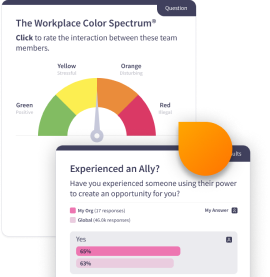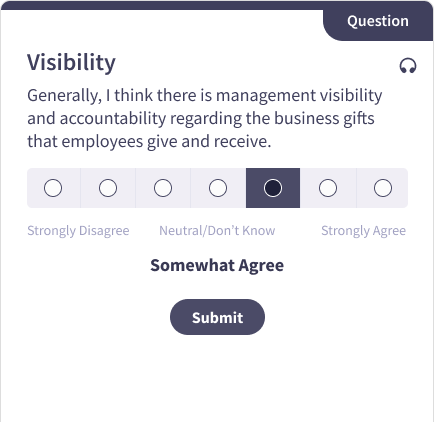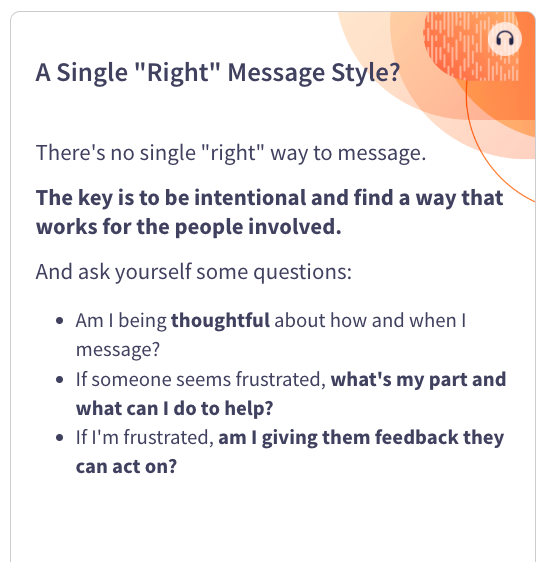
Understanding How Power Shapes Inclusion
People might be holding back their great ideas because your culture isn't as inclusive as you think. Power differences can impact how we engage with each other. It can lead to harassment situations when that power is used inappropriately, and can also impact how words and actions are perceived, and acted upon. For the sake of treating each other fairly and creating more inclusive workplaces, managers are encouraged to step outside their lens and view the perspective of their employees.
Microlesson DescriptionIn this microlesson, we illustrate how power differences, also known as power dynamics, can influence the way employees engage with their managers and vice versa. Encouraging employees to speak up, share ideas, and recognize their efforts are just a few examples of how to create more inclusive workplaces and to overcome power culture in the workplace.
Key Concepts- How to encourage candor and participation from your team.
- The importance of making an effort to reach out to employees and find out what’s holding them back.
- Why coaching and mentoring should be a priority and what happens, as a result, if it’s not.
- When an employee doesn’t object, it doesn’t mean that they welcome your conduct or agree with your statements.
Microlesson Features
- Employee sentiment pulsing questions that provide leaders with insights into their workforce's core cultural competencies
- Emtrain's Expert Answers tool, enabling employeees to submit anonymous questions about sensitive issues.
- Rich, contemporary video scences illustrating key concepts through realistic scenarios
- A data driven, skill-based approach to eLearning that establishes a shared language for employees.

Related Resources
Related Trainings
Frequently Asked Questions
Below are answers to common questions that employees and managers have about this topic. These FAQs provide a preview of what you’ll learn in this microlesson and why it matters.



